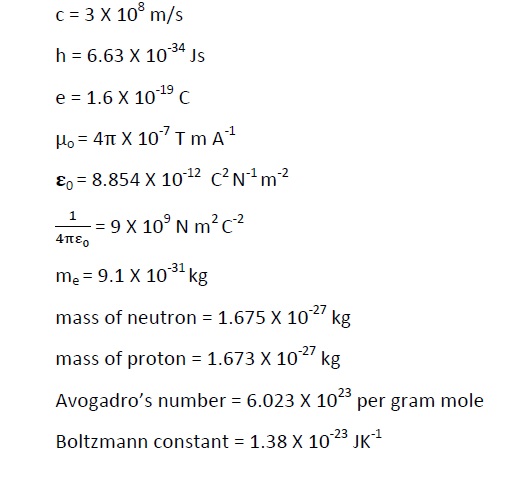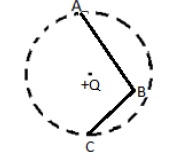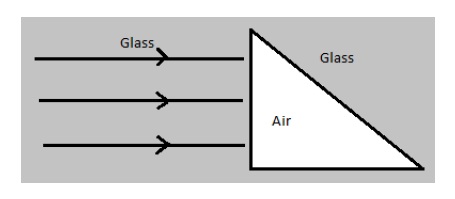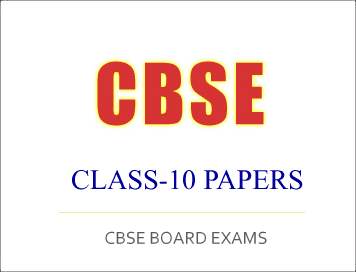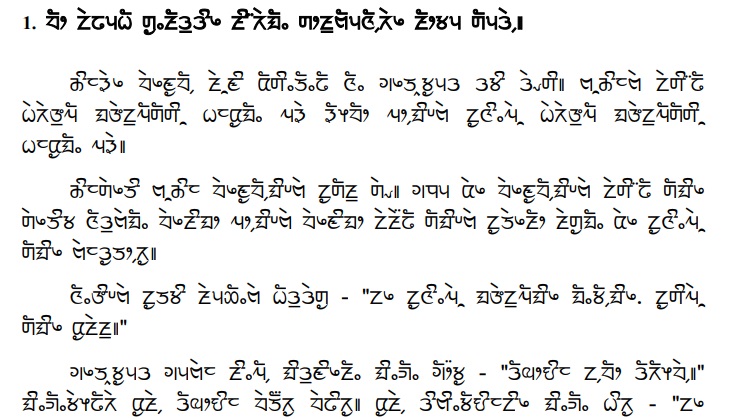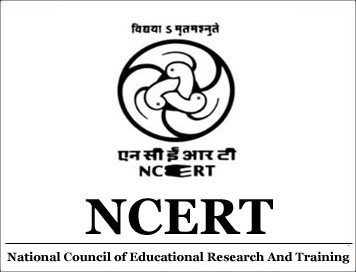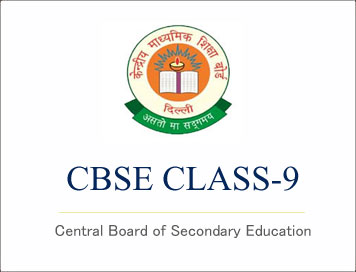CBSE PORTAL : (Download) CBSE Class-12 Sample Paper And Marking Scheme 2017-18 : Physics | |
- (Download) CBSE Class-12 Sample Paper And Marking Scheme 2017-18 : Physics
- (Download) CBSE Class-10 Sample Paper And Marking Scheme 2017-18 : (Limboo)
- NCERT English Question Paper (Class-9)
- CBSE Downloads: Syllabus, Projects, Guess Papers, Question Bank, Answer Keys, NCERT e-Books & much more..
- Download Free e-Books for CBSE Students
- CBSE Class-12 Syllabus 2018-19 (Biology)
- CBSE Class-12 Syllabus 2018-19 (Chemistry)
- CBSE Class-9 Syllabus 2018-19 (Carnatic Music)
- CBSE Class-9 Syllabus 2018-19 (Social Science)
- CBSE Class-12 Syllabus 2018-19 (Physics)
| (Download) CBSE Class-12 Sample Paper And Marking Scheme 2017-18 : Physics Posted: 24 May 2018 10:47 PM PDT | |||||||||||||||||||||||||||||||||||||||||||||||||||||||||||||||||||||||||
| (Download) CBSE Class-10 Sample Paper And Marking Scheme 2017-18 : (Limboo) Posted: 24 May 2018 10:46 PM PDT
(Download) CBSE Class-10 Sample Paper And Marking Scheme 2017-18 :(Limboo)
Click Here To Download Full Sample PaperClick Here To Download Full Marking SchemeCBSE (Class X) Previous Year Papers Printed Books<<Go Back To Main PageCourtesy:CBSE | |||||||||||||||||||||||||||||||||||||||||||||||||||||||||||||||||||||||||
| NCERT English Question Paper (Class-9) Posted: 24 May 2018 10:11 PM PDT | |||||||||||||||||||||||||||||||||||||||||||||||||||||||||||||||||||||||||
| Posted: 24 May 2018 05:54 AM PDT | |||||||||||||||||||||||||||||||||||||||||||||||||||||||||||||||||||||||||
| Download Free e-Books for CBSE Students Posted: 26 Apr 2018 03:19 AM PDT Download e-Books
| |||||||||||||||||||||||||||||||||||||||||||||||||||||||||||||||||||||||||
| CBSE Class-12 Syllabus 2018-19 (Biology) Posted: 31 Mar 2018 01:34 AM PDT | |||||||||||||||||||||||||||||||||||||||||||||||||||||||||||||||||||||||||
| Unit | Title | No. of Periods | Marks |
| VI | Reproduction | 30 | 14 |
| VII | Genetics and Evolution | 40 | 18 |
| VIII | Biology and Human Welfare | 30 | 14 |
| IX | Biotechnology and its Applications | 30 | 10 |
| X | Ecology and Environment | 30 | 14 |
| Total | 160 | 70 |
Unit-VI Reproduction : 30 periods
Chapter-1: Reproduction in Organisms
Reproduction, a characteristic feature of all organisms for continuation of species; modes of reproduction - asexual and sexual reproduction; asexual reproduction - binary fission, sporulation, budding, gemmule formation, fragmentation; vegetative propagation in plants.
Chapter-2: Sexual Reproduction in Flowering Plants
Flower structure; development of male and female gametophytes; pollination - types, agencies and examples; outbreeding devices; pollen-pistil interaction; double fertilization; post fertilization events - development of endosperm and embryo, development of seed and formation of fruit; special modes-apomixis, parthenocarpy, polyembryony; Significance of seed dispersal and fruit formation.
Chapter-3: Human Reproduction
Male and female reproductive systems; microscopic anatomy of testis and ovary; gametogenesis - spermatogenesis and oogenesis; menstrual cycle; fertilisation, embryo development upto blastocyst formation, implantation; pregnancy and placenta formation (elementary idea); parturition (elementary idea); lactation (elementary idea).
Chapter-4: Reproductive Health
Need for reproductive health and prevention of Sexually Transmitted Diseases (STDs); birth control - need and methods, contraception and medical termination of pregnancy (MTP); amniocentesis; infertility and assisted reproductive technologies - IVF, ZIFT, GIFT (elementary idea for general awareness).
Unit-VII Genetics and Evolution : 40 Periods
Chapter-5: Principles of Inheritance and Variation
Heredity and variation: Mendelian inheritance; deviations from Mendelism – incomplete dominance, co-dominance, multiple alleles and inheritance of blood groups, pleiotropy; elementary idea of polygenic inheritance; chromosome theory of inheritance; chromosomes and genes; Sex determination - in humans, birds and honey bee; linkage and crossing over; sex linked inheritance - haemophilia, colour blindness; Mendelian disorders in humans - thalassemia;
chromosomal disorders in humans; Down's syndrome, Turner's and Klinefelter's syndromes.
Click Here To Download Full Syllabus
Courtesy: CBSE
<< Go Back to Main Page
CBSE Class-12 Syllabus 2018-19 (Chemistry)
Posted: 31 Mar 2018 01:20 AM PDT
CBSE Class-12 Syllabus 2018-19 (Chemistry)
Rationale
Higher Secondary is the most crucial stage of school education because at this juncture specialized discipline based, content -oriented courses are introduced. Students reach this stage after 10 years of general education and opt for Chemistry with a purpose of pursuing their career in basic sciences or professional courses like medicine, engineering, technology and other applied areas. Therefore, there is a need to provide learners with sufficient conceptual background of Chemistry, which will make them competent to meet the challenges of academic and professional courses after the senior secondary stage.
The new and updated curriculum is based on disciplinary approach with rigour and depth taking care that the syllabus is not heavy and at the same time it is comparable to the international level. The knowledge related to the subject of Chemistry has undergone tremendous changes during the past one decade. Many new areas like synthetic materials, bio -molecules, natural resources, industrial chemistry are coming in a big way and deserve to be an integral part of chemistry syllabus at senior secondary stage. At international level, new formulations and nomenclature of elements and compounds, symbols and units of physical quantities floated by scientific bodies like IUPAC and CGPM are of immense importance and need to be incorporated in the updated syllabus. The revised syllabus takes care of all these aspects. Greater emphasis has been laid on use of new nomenclature, symbols and formulations, teaching of fundamental concepts, application of concepts in chemistry to industry/ technology, logical sequencing of units, removal of obsolete content and repetition, etc.
Objectives
The curriculum of Chemistry at Senior Secondary Stage aims to:
• promote understanding of basic facts and concepts in chemistry while retaining the excitement of chemistry.
• make students capable of studying chemistry in academic and professional courses (such as medicine, engineering, technology) at tertiary level.
• expose the students to various emerging new areas of chemistry and apprise them with their relevance in future studies and their application in various spheres of chemical sciences and technology.
• equip students to face various challenges related to health, nutrition, environment, population, weather, industries and agriculture.
• develop problem solving skills in students.
• expose the students to different processes used in industries and their technological applications.
• apprise students with interface of chemistry with other disciplines of science such as physics, biology, geology, engineering etc.
• acquaint students with different aspects of chemistry used in daily life.
• develop an interest in students to study chemistry as a discipline.
• integrate life skills and values in the context of chemistry.
CLASS XII (2018-19)
THEORY
Total Periods (Theory 160 + Practical 60)
Time: 3 Hours
70 Marks
| Unit No. | Title | No. of Periods | Marks |
| Unit I | Solid State | 10 |
23 |
| Unit II | Solutions | 10 | |
| Unit III | Electrochemistry | 12 | |
| Unit IV | Chemical Kinetics | 10 | |
| Unit V | Surface Chemistry | 08 | |
| Unit VI | General Principles and Processes of Isolation of Elements | 08 |
19 |
| Unit VII | p-Block Elements | 12 | |
| Unit VIII | d -and f -Block Elements | 12 |
|
| Unit IX | Coordination Compounds | 12 | |
| Unit X | Haloalkanes and Haloarenes | 10 |
28 |
| Unit XI | Alcohols, Phenols and Ethers | 10 | |
| Unit XII | Aldehydes, Ketones and Carboxylic Acids | 10 | |
| Unit XIII | Organic Compounds containing Nitrogen | 10 | |
| Unit XIV | Biomolecules | 12 | |
| Unit XV | Polymers | 08 | |
| Unit XVI | Chemistry in Everyday Life | 06 | |
|
| Total | 160 | 70 |
Click Here To Download Full Syllabus
Courtesy: CBSE
<< Go Back to Main Page
CBSE Class-9 Syllabus 2018-19 (Carnatic Music)
Posted: 28 Mar 2018 12:40 AM PDT
CBSE Class-9 Syllabus 2018-19 (Carnatic Music)
CARNATIC MUSIC (VOCAL) Theory
Syllabus for Class IX
Periods: 135
Marks: 25
I. Brief history of Carnatic Music with special reference to Saint Purandara dasa, Annamacharya, Bhadrachala Ramadasa, Saint Tyagaraja, Muthuswamy Dikshitar, Syama Shastry and Swati Tirunal.
II. Definition of the following terms:
Sangeetam, Nada, raga, laya, Tala, Dhatu, Mathu, Sruti, Alankara, Arohana, Avarohana, Graha (Sama, Atita, Anagata), Svara – Prakruti & Vikriti Svaras, Poorvanga & Uttaranga, Sthayi, vadi, Samvadi, Anuvadi & Vivadi Svara – Amsa, Nyasa and Jeeva.
III. Brief raga lakshanas of Mohanam, Hamsadhvani, Malahari, Sankarabharanam, Mayamalavagoula, Bilahari, khamas, Kharaharapriya, Kalyani, Abhogi & Hindolam.
IV. Brief knowledge about the musical forms.
Geetam, Svarajati, Svara Exercises, Alankaras, Varnam, Jatisvaram, Kirtana & Kriti.
V. Description of following Talas:
Adi – Single & Double Kalai, Roopakam,
Chapu – Tisra, Misra & Khanda and Sooladi Sapta Talas.
CARNATIC MUSIC (VOCAL) Theory
Format of Written Examination for Class IX
25 Marks
1. Long Answer (Essay)
a. Biography 05 Marks
b. Musical Forms 05 Marks
Short Answers with Examples
c. Writing of minimum three Raga-lakshana from prescribed list in the syllabus. 05 Marks
d. Description of talas, illustrating with examples. 05 Marks
e. Short notes of minimum 05 technical terms from the topic II. 05 Marks
Note: - Examiners should set atleast seven questions in total and the students should answer five questions from them, including two Essays, two short answer and short notes questions based on technical terms (topic - II) will be compulsory.
CARNATIC MUSIC (VOCAL) Practical
Syllabus for Class IX
Periods: 405
Marks: 75
I. Vocal exercises – Svaravalis, Hechchu and Taggu Sthayi, Alankaras in three degrees of speed.
II. Simple Geetams – Two Pillari Gitams, two Sadharana Geetams or Sanchari Geetams.
III. Simple Svarajatis in Khamas and Bilahari raga.
IV. Four Adi tala Varnams in two degrees of speed.
V. 6 Keertanas in the ragas prescribed.
VI. Svarajnanam test in the prescribed ragas and learnt compositions.
VII. Singing of one Devarnama, one Patriotic song, one Tiruppugazh and one folk song.
CARNATIC MUSIC (VOCAL) Theory
Format of Practical Examination for Class IX
Marks: 75
1. Questions based on vocal exercises in three degrees of speed. 10 Marks
2. Geetam – At least two from the syllabus 10 Marks
3. Questions based on Swarajatis taught. 10 Marks
4. Singing of Varnams in two degrees of speed. 15 Marks
5. Questions based on Keertanas learnt. 20 Marks
a. Rendering of Kirtana
b. Swarajnanam test
c. Details of the ragas
6. Singing of one or two item from the topic VI 10 Marks
Click Here To Download Full Carnatic Music Vocal Syllabus
Click Here To Download Full Carnatic Music Percussion Syllabus
Click Here To Download Full Carnatic Music Melodic Instrument Syllabus
Courtesy: CBSE
<< Go Back to Main Page
CBSE Class-9 Syllabus 2018-19 (Social Science)
Posted: 28 Mar 2018 12:22 AM PDT
CBSE Class-9 Syllabus 2018-19 (Social Science)
Rationale
Social Science is a compulsory subject upto secondary stage of school education. It is an integral component of general education because it helps the learners in understanding the environment in its totality and developing a broader perspective and an empirical, reasonable and humane outlook. This is of crucial importance because it helps them grow into well-informed and responsible citizens with necessary attributes and skills for being able to participate and contribute effectively in the process of development and nation- building.
The Social Science curriculum draws its content mainly from Geography, History, Political Science and Economics. Some elements of Sociology and Commerce are also included. Together they provide a comprehensive view of society-over space and time, and in relation to each other. Each subject’s distinct methods of enquiry help the learners to understand society from different angles and form a holistic view.
Objectives
The main objectives of this syllabus are:
• to develop an understanding of the processes of change and development-both in terms of time and space, through which human societies have evolved.
• to make learners realise that the process of change is continuous and any event or phenomenon or issue cannot be viewed in isolation but in a wider context of time and space.
• to develop an understanding of contemporary India with its historical perspective, of the basic framework of the goals and policies of national development in independent India, and of the process of change with appropriate connections to world development.
• to deepen knowledge about and understanding of India’s freedom struggle and of the values and ideals that it represented, and to develop an appreciation of the contributions made by people of all sections and regions of the country.
• to help learners understand and cherish the values enshrined in the Indian Constitution and to prepare them for their roles and responsibilities as effective citizens of a democratic society.
• to deepen the knowledge and understanding of India’s environment in its totality, their interactive processes and effects on the future quality of people’s lives.
• to facilitate the learners to understand and appreciate the diversity in the land and people of the country with its underlying unity.
• to develop an appreciation of the richness and variety of India’s heritage-both
• to promote an understanding of the issues and challenges of contemporary India-environmental, economic and social, as part of the development process.
• to help pupils acquire knowledge, skills and understanding to face the challenges of contemporary society as individuals and groups and learn the art of living a confident and stress-free life as well as participating effectively in the community.
• to develop scientific temper by promoting the spirit of enquiry and following a rational and objective approach in analysing and evaluating data and information as well as views and interpretations.
• to develop academic and social skills such as critical thinking, communicating effectively both in visual and verbal forms- cooperating with others, taking initiatives and providing leadership in solving others’ problems.
• to develop qualities clustered around the personal, social, moral, national and spiritual values that make a person humane and socially effective.
COURSE STRUCTURE
CLASS IX
Time: 3 Hrs.
Max. Marks: 80
| No. | Units | Marks | Periods |
| I | India and the Contemporary World - I | 20 | 60 |
| II | Contemporary India - I | 20 | 55 |
| III | Democratic Politics - I | 20 | 50 |
| IV | Economics | 20 | 50 |
| Total | 80 | 215 |
Click Here To Download Full Syllabus
Courtesy: CBSE
<< Go Back to Main Page
CBSE Class-12 Syllabus 2018-19 (Physics)
Posted: 27 Mar 2018 11:52 PM PDT
CBSE Class-12 Syllabus 2018-19 (Physics)
Senior Secondary stage of school education is a stage of transition from general education to discipline-based focus on curriculum. The present updated syllabus keeps in view the rigour and depth of disciplinary approach as well as the comprehension level of learners. Due care has also been taken that the syllabus is comparable to the international standards. Salient features of the syllabus include:
- Emphasis on basic conceptual understanding of the content.
- Emphasis on use of SI units, symbols, nomenclature of physical quantities and formulations as per international standards.
- Providing logical sequencing of units of the subject matter and proper placement of concepts with their linkage for better learning.
- Reducing the curriculum load by eliminating overlapping of concepts/content within the discipline and other disciplines.
- Promotion of process-skills, problem-solving abilities and applications of Physics concepts.
Besides, the syllabus also attempts to
- strengthen the concepts developed at the secondary stage to provide firm foundation for further learning in the subject.
- expose the learners to different processes used in Physics-related industrial and technological applications.
- develop process-skills and experimental, observational, manipulative, decision making and investigatory skills in the learners.
- promote problem solving abilities and creative thinking in learners.
- develop conceptual competence in the learners and make them realize and appreciate the interface of Physics with other disciplines.
CLASS XII (2018-19)
(THEORY)
Time: 3 hrs.
Max Marks: 70
|
|
| No. of Periods | Marks |
| Unit–I | Electrostatics |
22 |
15 |
|
| Chapter–1: Electric Charges and Fields | ||
|
|
Chapter–2: Electrostatic Potential and Capacitance | ||
| Unit-II | Current Electricity |
20 | |
|
| Chapter–3: Current Electricity | ||
| Unit-III | Magnetic Effects of Current and Magnetism |
22 |
16 |
|
| Chapter–4: Moving Charges and Magnetism | ||
|
| Chapter–5: Magnetism and Matter | ||
| Unit-IV | Electromagnetic Induction and Alternating Currents |
20 | |
|
| Chapter–6: Electromagnetic Induction | ||
|
| Chapter–7: Alternating Current | ||
| Unit–V | Electromagnetic Waves |
04 |
17 |
|
| Chapter–8: Electromagnetic Waves | ||
| Unit–VI | Optics |
25 | |
|
| Chapter–9: Ray Optics and Optical Instruments | ||
|
| Chapter–10: Wave Optics | ||
| Unit–VII | Dual Nature of Radiation and Matter |
08 |
10 |
|
| Chapter–11: Dual Nature of Radiation and Matter | ||
| Unit–VIII | Atoms and Nuclei |
14 | |
|
| Chapter–12: Atoms | ||
|
| Chapter–13: Nuclei | ||
| Unit–IX | Electronic Devices |
15 |
12 |
|
| Chapter–14: Semiconductor Electronics: Materials, Devices and Simple Circuits | ||
| Unit–X | Communication Systems |
10 | |
|
| Chapter–15: Communication Systems | ||
| Total | 160 | 70 | |
Click Here To Download Full Syllabus
Courtesy: CBSE
<< Go Back to Main Page
| You are subscribed to email updates from CBSE PORTAL : CBSE, ICSE, NIOS, JEE-MAIN, AIPMT Students Community. To stop receiving these emails, you may unsubscribe now. | Email delivery powered by Google |
| Google, 1600 Amphitheatre Parkway, Mountain View, CA 94043, United States | |

